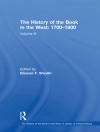For at least a century, scholarship on realist narrative, and occasional polemics against realist narrative, have assumed that realism promotes the values of sameness against those of otherness, and that it does so by use of a narrative mode that excludes certain epistemologies, ideologies, and ways of thinking. However, the truth is more complex than that, as the essays in this volume all demonstrate. Realism’s Others examines the various strategies by which realist narratives create the idea of difference, whether that difference is registered in terms of class, ethnicity, epistemology, nationality, or gender. The authors in this collection examine in detail not just the fact of otherness in some canonical realist and canonical magical-realist and postmodern novels, but the actual means by which that otherness is established by the text. These essays suggest that neither realist narrative nor narratives positioned as anti-realist take otherness for granted; rather, the texts discussed here actively create difference, and this creation of difference often occasions severe difficulties for the novels’ representational schema.How does one represent different types of knowledge, other aesthetic modes or other spaces, for example, in texts whose epistemology has long been seen as secular and empirical, whose aesthetic mode has always been approached as pure descriptive mimesis, and whose settings are largely domestic? These essays all begin with a certain collision-of nationalities, of classes, of representational matrices, of religions-and go on to chart the challenges that this collision presents to our ideas or stereotypes of realism, or to the possibilities of writing against and beyond realism. This question motivates examination of key realist or social-realist texts, in some of these essays, by Honore de Balzac, George Eliot, Franz Grillparzer, Theodor Storm, Gottfried Keller, Theodor Fontane, Wilhelm Raabe, Maria Amparo Ruiz de Burton, Henry James, William Dean Howells, Charles Chesnutt, Theodore Dreiser, H. T. Tsiang, Alan Sillitoe, and Richard Yates. However, it is no less central a question in certain non-realist texts which engage realist aims to a surprising degree, often to debate them openly; some of these essays discuss, in this light, fantastic, magical realist, and postmodern works by Abram Tertz, Paul Auster, Alejo Carpentier, Toni Morrison, Gabriel Garcia Marquez, Salman Rushdie, and A. S. Byatt. Realism becomes more than an aesthetic aim or narrative mode. It becomes, rather, a value evoked and discussed by all of the works analyzed here, in order to reveal its impact on fiction’s treatment of ethnicity, nationality, ideology, space, gender, and social class.
Eva Aldea & Geoffrey Baker
Realism’s Others [PDF ebook]
Realism’s Others [PDF ebook]
Achetez cet ebook et obtenez-en 1 de plus GRATUITEMENT !
Format PDF ● Pages 315 ● ISBN 9781443823463 ● Éditeur Eva Aldea & Geoffrey Baker ● Maison d’édition Cambridge Scholars Publishing ● Publié 2010 ● Téléchargeable 6 fois ● Devise EUR ● ID 2617347 ● Protection contre la copie Adobe DRM
Nécessite un lecteur de livre électronique compatible DRM












